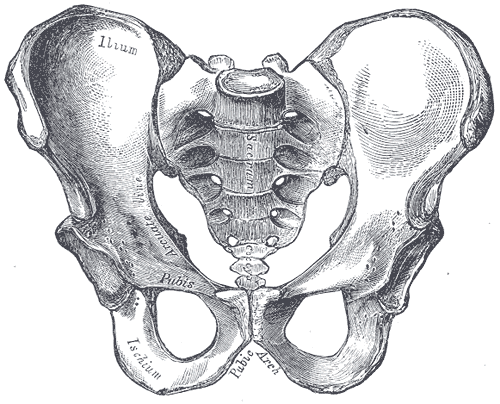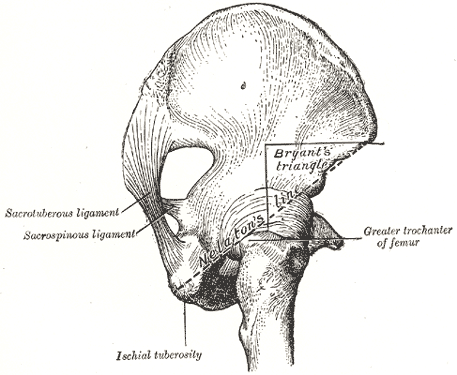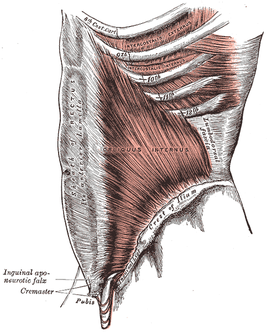THE RELATIONSHIP BETWEEN ACUTE STRAINS OF THE
HIP FLEXORS AND THE ABDOMINAL FASICA
The pelvis is made up of three individual bones, the illium, the ischium, and the pubis (pubic bone). Most of us already know where the pubic bone is. The ischium is the “butt bone” —- the bone that we sit on. Both of these bones are relatively small; particularly when compared to the illium. The Illium is a very big bone. It is what you feel when you put your hands on your hips. The top of the bone (the ‘Illicac Crest) is very thick. Wolff’s Law says that “Bone grows in response to mechanical stress placed upon it, whether that stress is normal or abnormal.” In the case of the Illicac Crest, the stress is normal. Anytime you get several powerful muscles attaching to the same area, the bone will thicken. You can see this in virtually all the pictures.
By the way, the very tip (front) of the Illica Crest is called the Anterior Superior Illiac Spine (ASIS). Feel your own to feel how thick / dense this bony area is. This is where people get an injury called a “Hip Pointer”.
LEFT ILLIAC CREST
ABOVE: look how the Internal Oblique Muscle attaches to the Illium, clear down to the tip of the Illiac Crest called the ASIS. What is interesting is that at least three of the various layers of abdominal muscles (rectus abdominis, external oblique, internal oblique, transverse abdominis) have attachments to the Illiac Crest.
RIGHT: You can see that the Tensor Fascia Latae with its mega-long tendon (the ITB), as well as part of the Quadriceps Muscle, and the Sartorius Muscle, all attach to the Illicac Crest. These are some of the muscles that are collectively known as the “Hip Flexors”. |
RIGHT ILLIAC CREST
|
Because these two groups of muscles (the Abdominals and Hip Flexors) both share a common attachment point (the Illicac Crest) and because they share a similar action (hip flexion — bringing the knee toward the chest), I often see them injured in tandem. I have recently treated a severe case of this. A tremendous high school athlete suffered an injury that brought him in writhing in pain — in a wheel chair. I found FASCIAL ADHESIONS and TORN MUSCLES in both the abdominal group, as well as the hip flexors. Fortunately, I was able to help him. For more information, you can also visit our HIP FLEXOR TENDINOSIS PAGE. And for those who are not aware, if this problem is allowed to continue, it can result in PIRIFORMIS SYNDROME.




